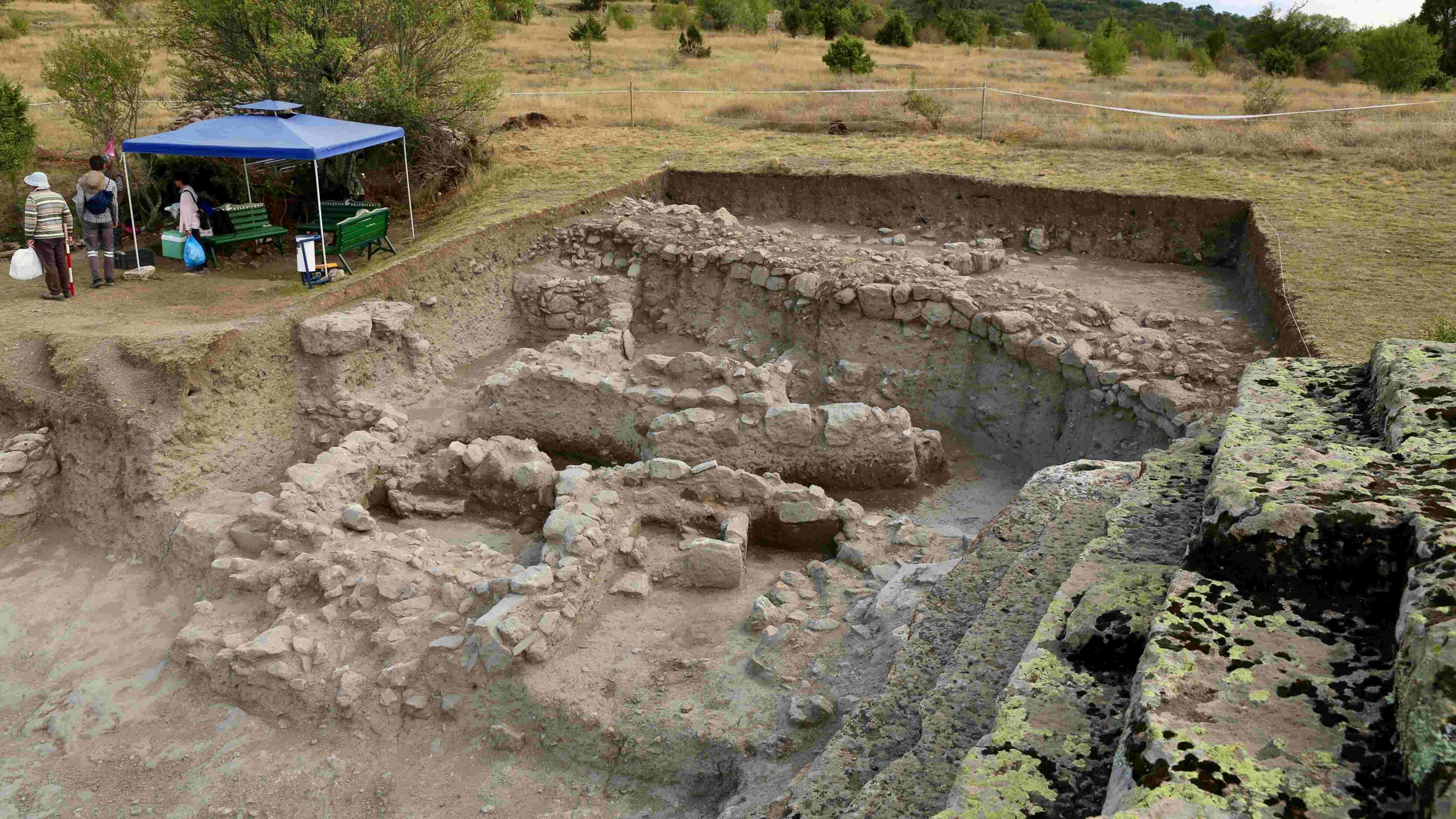
Archaeologists have discovered ancient ovens and hearths, thought to belong to Phrygians, who inhabited the region around the seventh century B.C., during excavations at Midas Castle in the central Anatolian province of Eskişehir.
The work, which began in 2022, was carried out in the 3-kilometer (1.8-mile) Midas Valley, home to the famous Yazılıkaya Monument.
Led by archeologist Yusuf Polat from Anadolu University, the excavation uncovered significant findings in the 26-hectare Midas Castle area.
Researchers found seventh-century B.C. ovens and hearths near a Phrygian rock altar. The Phrygians were an ancient civilization in Anatolia. Experts determined that these structures were used for cooking sacrificial animals and baking bread during religious rituals.
Noting that the team focused on the "Agdistis sacred area" in the rocky plateau, Polat said: “We identified areas with hearths where ritual preparations took place, featuring simple stone foundations and wooden structures."
Stating that they got important results in the study around the rock altar dating back to the Phrygian period, Polat said: “Thanks to the comprehensive excavations carried out in front of a Phrygian altar for the first time, we determined the existence of places with simple stone foundations and wooden constructions where the preparations for the rituals performed in front of the altar were carried out, where the hearths were located. According to our first findings, in the sacred area dated to the eighth-seventh century B.C., which is the Middle Phrygian Period, we also identified artifacts from the seventh-sixth century B.C. Lydia ceramics, as well as ceramics and finds from the Roman Period dated to the first and second centuries in the upper layers.”
Polat said that they found four rock basins lined up one after the other, carved into a rocky platform at the excavation site, as well as a rock idol representing abstract depictions of the mother goddess Matar right next to them.
Inhabited for 250,000 years
Stating that they found rock bowls made side by side on a platform and quadrangular planned hearths suitable for burning from above, Polat said: “The existence of rock bowls and the idol found right next to the bowls is concrete evidence that this area was blessed by the mother goddess for abundance and fertility rituals.”
He emphasized that the hearths and ovens found in the excavation provided important information about how the rituals were organized and stated that they determined life in the region has continued from 250,000 years ago to the present.
“We found stone tools belonging to the Lower Paleolithic period during our surface research. Almost all of the civilizations that came later lived in this geography because these deep valleys were suitable for defense and very fertile. At the same time, they were preferred for settlement because they had wetlands,” he said.